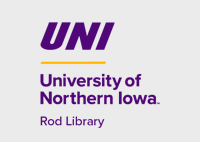2024 Three Minute Thesis
Presentation Type
Open Access Poster Presentation
Abstract
This study explores the linguistic and cultural practices that are portrayed in bilingual children's animated television programs, Santiago of the Seas and Alma's Way. Discourse analysis focuses on the main characters of each show. The analysis of the first season of each program demonstrates that characters primarily use Spanish to make cultural references, express terms of endearment, and as a way to form relationships between friends and family members. By exploring this linguistic practice of emblematic code-switching together with the representation of cultural practices, the authenticity of these practices utilized within multilingual communities can be evaluated. While previous studies show that Latino characters are generally portrayed with neutral accents and general characteristics, this study finds that both programs represent specific dialects of Spanish and contain realistic representations portraying the use and integration of two or more languages and cultures as a normal and positive marker of identity within multilingual communities.
Start Date
7-11-2024 11:00 AM
End Date
7-11-2024 1:00 PM
Event Host
Division of Graduate Studies, University of Northern Iowa
Faculty Advisor
Elise DuBord
Department
Department of Languages and Literatures
Department
TESOL/Spanish
Copyright
©2024 Jordan Carter
Recommended Citation
Carter, Jordan, "A representation of the normalization of multiculturalism and authentic language use in children’s animated bilingual television programs" (2024). Three Minute Thesis (3MT®) at UNI. 3.
https://scholarworks.uni.edu/tmt/2024/all/3
A representation of the normalization of multiculturalism and authentic language use in children’s animated bilingual television programs
This study explores the linguistic and cultural practices that are portrayed in bilingual children's animated television programs, Santiago of the Seas and Alma's Way. Discourse analysis focuses on the main characters of each show. The analysis of the first season of each program demonstrates that characters primarily use Spanish to make cultural references, express terms of endearment, and as a way to form relationships between friends and family members. By exploring this linguistic practice of emblematic code-switching together with the representation of cultural practices, the authenticity of these practices utilized within multilingual communities can be evaluated. While previous studies show that Latino characters are generally portrayed with neutral accents and general characteristics, this study finds that both programs represent specific dialects of Spanish and contain realistic representations portraying the use and integration of two or more languages and cultures as a normal and positive marker of identity within multilingual communities.




